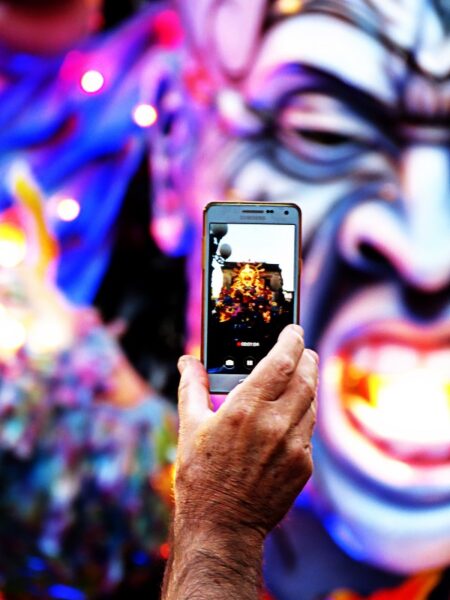The Mardi-Gras Carnival all around Mount Etna, as well as almost everywhere in Italy, dates back to the medieval Spanish tradition. That is, it granted three days of celebration without rules before the Lent period of penance. This festival is influenced by even more ancient echoes, which recall the Roman “bacchanalia” but then in the Middle Ages it developed according to the traditions of each territory. Around the volcano Etna there are many different carnival traditions, some still very much alive while others have become just a memory. If you find yourself on Etna in this period, enjoy – in addition to the many excursions that the mountain offers – even a few evenings of total joy.
Mardi-Gras and the lava masks
To understand the Etna Mardi-Gras you could start by looking at the work of some craftsmen who often entertain tourists at high altitudes (Rifugio Sapienza area, Silvestri craters or Piano Provenzana). They are masters of carving the very hard Etna lava stone, with which they create fascinating and disturbing faces.
You find lava masks almost everywhere in the Etna area. They are linked to ancient rituals that were supposed to keep evil away from homes. In fact, you can find them above the doors, under the balconies. Sometimes even on the eaves of churches. And these baroque masks did inspire some famous Catania carnivals, such as Acireale and Misterbianco.
 Mardi-Gras events on Mt Etna
Mardi-Gras events on Mt Etna
There is only one “city of masks” par excellence in the Etna area, Acireale. Here the Baroque stone masks have been transferred to papier-mâché and every year, at Mardi-Gras, they become huge allegorical floats. The floats, crowded with even large-sized masks, are animated by the computer and illuminated by sophisticated light games. They alternate with parades of floats made up of thousands of flowers and with the masked groups that precede them. The carnival of Acireale is among the oldest ever and, to date, one of the most beautiful in all of Italy.
Misterbianco – on the south side of Etna – involves the population in a carnival very similar to that of Rio, in Brazil. Here the protagonists are the masked groups, which follow a theme each, and show off costumes worked with skill for months so to achieve amazing results. Even the Misterbianco carnival has ancient traditions but it has only been rediscovered 30 years ago.
Catania has a Mardi-Gras tradition linked above all to its large public park. On that day, people gather at Villa Bellini park to celebrate, play, dance and entertain the children with confetti and jokes.
On the south-west flank of Etna the so-called “historical carnivals” do resist – with mixed fortunes. In fact, Paternò and Biancavilla boast carnivals linked to the traditions of the 18th and 19th centuries, with parades of carriages and dances in the square. Today, papier-mâché floats and masked groups also often parade, in the name of pure fun.
Different but no less romantic are the traditions of the Mardi-Gras in Belpasso – where the masked groups are preceded by singers and poets who recite verses in Sicilian. In Bronte, the masks of the “laddalori” still go around the houses asking for food in exchange for a few of joy. On the northern side, Randazzo and Linguaglossa have recently resumed celebrating carnival. They do it with parades of masks through the city streets and with dances in the square. Of course, you shall taste the pork sausage, queen of the festival, which is the main gastronomic specialty in Linguaglossa. (photos by Grazia Musumeci)